Types of Stairs Used in Building Construction
Types of stairs used in building construction is broadly based on the shape of the stairs. Straight stairs, Turning stairs and Continuous stairs are broad types of stairs.
A stair is a set of steps leading from one floor of a building to another, typically inside the building. The room or enclosure of the building, in which the stair is located is known as staircase. The opening or space occupied by the stair is known as a stairway.
Types of Stairs – Classification of stairs:
Stairs can be broadly classified into three types:
- Straight stairs
- Turning stairs
- Continuous stairs
1. Straight stairs
Generally for small houses, available width is very retractable. So, this type of straight stairs are used in such conditions which runs straight between two floors. This stair may consists of either one single flight or more than one flight with a landing.

2. Turning stairs
Turning stairs are sub classified as:
- Quarter turn stairs
- Half turn stairs ( dog legged stairs)
- Three – quarter turn stairs
- Bifurcated stairs
3. Quarter turn stairs
A quarter turn stair is the one which changes its direction either to the right or to the left but where the turn being affected either by introducing a quarter space landing or by providing winders. In these type of stairs the flight of stair turns 90 degrees art landing as it rises to connect two different levels. So it is also called as L-stair. Again these quarter turn stairs are two types.
3.1. Newel quarter turn stairs
These type of stairs have clearly visible newel posts at the beginning of flight as well as at the end. At the quarter turn, there may either be quarter space landing or there may be winders.
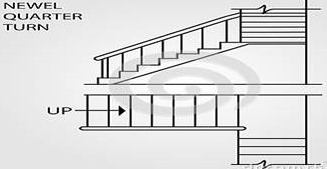
3.2. Geometrical quarter turn stairs
In geometrical stairs, the stringer as well as the handrail is continuous without any newel post at the landing area.
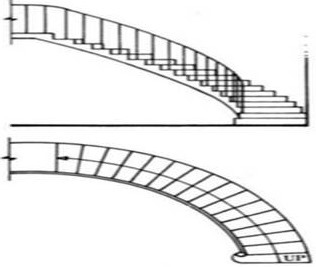
4. Half turn stairs
In case of half turn stairs its direction reversed, or changed for 180o. Such stairs are quite common. Again these are three types.
4.1. Dog-legged stairs
Because of its appearance in sectional elevation this name is given. It comes under the category of newel stairs in which newel posts are provided at the beginning and end of each flight.
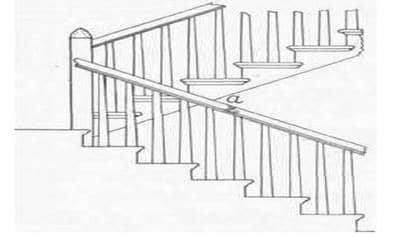
4.2. Open newel half turn stair
In this type of open newel half turn stairs, stair has a space or well between the outer strings. This is the only aspect in which it differs from the doglegged stair.
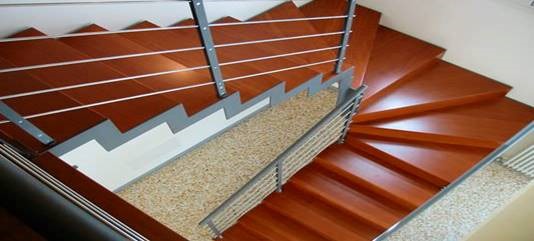
4.3. Geometrical half turn stairs
In case of geometrical half turn stairs the stringers and the hand rails are continuous, without any intervening newel post. These stairs may contains either with half space landing or without landing.

5. Three quarter turn stairs
The direction of stairs changed three times with its upper flight crossing the bottom one in the case of three quarter turn stairs. These stairs are may either be newel or open newel type. This type stairs are generally used when the vertical distance between two floors is more and as well as length of the stair room is limited.

6. Bifurcated stairs
Bifurcated stairs are commonly used in public building at their entrance hall. This has a wider flight at the bottom, which bifurcates into two narrower flights, one turning to the left and other to the right, at landing.it may be either of newel type with a newel post or of geometrical type with continuous stringer and hand rails.
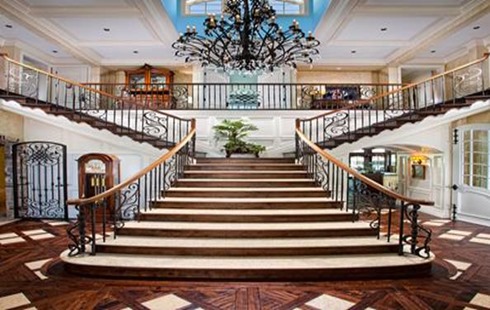
7. Continuous stairs
This type of stairs neither have any landing nor any intermediate newel post. They are geometric in shape. These are may be of following types.
- Circular stairs
- Spiral stairs
- Helical stairs
Circular stairs or spiral stairs are usually made either of R.C.C or metal, and is placed at a location where there are space limitations. Sometimes these are also used as emergency stairs, and are provided at the back side of a building. These are not comfortable because of all the steps are winders and provides discomfort.
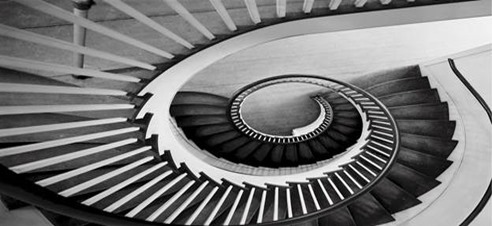
A helical stair looks very fine but its structural design and construction is very complicated. It is made of R.C.C in which a large portion of steel is required to resist bending, shear and torsion.
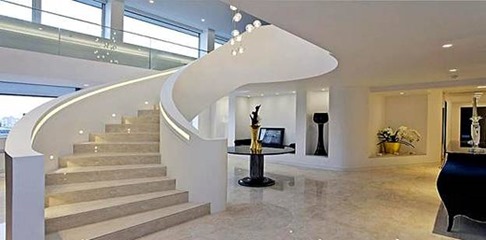
Comments